#african cowboy
Text
GBN's Daily Drop: Learn About Mary Fields aka "Stagecoach Mary" - 1st Black Woman Contracted to Deliver U.S. Mail
GBN’s Daily Drop: Learn About Mary Fields aka “Stagecoach Mary” – 1st Black Woman Contracted to Deliver U.S. Mail
by Lori Lakin Hutcherson (@lakinhutcherson)
Today’s GBN Daily Drop podcast is based on the Saturday, March 12 entry in the “A Year of Good Black News” Page-A-Day®️ Calendar for 2022 about Mary Fields aka “Stagecoach Mary” the formerly enslaved woman who delivered mail for the U.S. Postal Service in the Old West:
https://goodblacknews.org/wp-content/uploads/2022/03/GBNPADpod031222.mp3
You can…

View On WordPress
#"African American Women of the Old West"#"Stagecoach Mary"#AllBlk#Amazon#black cowboys#Cascade#GBN Daily Drop Podcast#Lori Lakin Hutcherson#Mary Fields#Montana#Scott Joplin#U.S. Postal Service#“Maple Leaf Rag”
34 notes
·
View notes
Text
IMPORTANT PEOPLE IN ARCHAEOLOGY: GEORGE MCJUNKIN

Alright everyone, in honor of Juneteenth, I would like to tell you the story of Mr. George McJunkin, an African American Cowboy and archaeologist!
McJunkin was born into slavery on a ranch in Texas in 1851. His father worked on that same ranch as a blacksmith after he purchased his own freedom; and no sources online can seem to provide any information on his mother.
Growing up, McJunkin learned many skills as a ranch hand and he also frequently interacted with Mexican vaqueros (cowboys) who taught him how to handle horses.
On a night in 1867 he packed up some food, an extra pair of pants, took a mule from his master’s ranch, and set out to become a cowboy. McJunkin had many jobs as a horse and cattle wrangler as well as a manager of various ranches in both South and West Texas, Northeastern New Mexico, and in Northwestern Oklahoma.
It was during this time that he learned how to read and write from other cowboys; but he also picked up quite a bit on his own. He taught himself how to speak fluent Spanish, and how to play the fiddle. He was also very interested in science and history, and educated himself in archaeology.
In the early 1900s McJunkin was offered a job as the foreman on the Crowfoot Ranch near Folsom, New Mexico (yeah THAT Folsom, New Mexico my fellow Prehistoric North American archaeology nerds).
Then, on August 27th, 1908 Folsom was hit with a harsh and heavy rainstorm which ended up causing massive flooding. McJunkin and a friend Bill Gordon were surveying damage to fences along the Dry Cimarron River, and it was in the Wild Horse Arroyo that McJunkin noticed huge bones sitting in the newly exposed sediment.
McJunkin’s life experience allowed him to recognize these bones were not from any modern day cattle or buffalo species, and therefore were probably a significant archaeological discovery. He tried to get the scientific community interested in the site with no luck.
George McJunkin passed away in 1922 at the age of 71 without having known just how significant this discovery was going to be.*
While the realms of American anthropology and archaeology have made significant progress and improvements in the past 100 years (though they still have a long way to go), the disciplines during the early 1900s were inundated with racism and prejudice. Scientific authorities at the time were hard-set in their understanding that Indigenous prehistory only extended approximately 3,000 years B.P. (before the present). This relatively young date range helped to justify academic views at the time that Indigneous peoples were ‘savage’ and ‘uncivilized’, and therefore inferior white western culture.
Several months after McJunkin’s death in 1922 a team of amateur archaeologists ended up excavating the arroyo site and discovered more bones and associated projectile points (projectile point is the general term to refer to spear or arrow heads).
Then, in 1926 the director of the Colorado Museum of Natural History (now the Denver Museum of Nature and Science) J.D. Figgins was shown bones from the site and he proceeded with formal excavations in that same year.
The Folsom site is monumental for how it changed the way western academics understood North American prehistory. These excavations turned up approximately 30 individual skeletons from the extinct bison species Bison antiquus. This is a species that dates from 10,000 to 18,000 years ago.

In the following year, 1927, a skeleton was found with a spear point lodged in situ (in place/in context) between the bison’s ribs (what is known as a Folsom Point). This find meant that prehistoric people existed within the North American continent at least 11,000 years B.P.

Again, there is no way to overstate how significant this site is, and how frankly cool it is that a Black cowboy and former slave was the one to initially find it. Though, I would also like to note that The Denver Museum of Nature and Science does not mention George McJunkin and his association with the Folsom archaeology site that made them well-known; and if the information is present it is not easily accessible.
There are no doubt countless unsung brilliant anthropologists and archaeologists throughout American history, people who have made incredible contributions to these disciplines without ever knowing the true impact they would have.
George McJunkin is certainly one of these people, but as time goes on I am hopeful that his story and importance will be taught alongside all the big names in American anthropology, because his life is certainly one that deserves to be celebrated.
*Brief aside from the author: the word ‘discovery’ never really feels appropriate to me when discussing prehistoric Indigenous sites. I don’t know about anyone else, but to me the idea of ‘Discovering’ seems to imply that Indigenous people didn’t already know a site was there. I am sure many nations did/do know the location of important cultural sites but may not want to disturb them for various reasons. Anyway if you stuck through this mini-soapbox thank you, please continue on with your regularly scheduled reading.*
Refs
“George McJunkin and the Discovery That Changed American Archaeology.” Archaeology Southwest, 20 Oct. 2020, www.archaeologysouthwest.org/2015/02/23/george-mcjunkin-and-the-discovery-that-changed-american-archaeology/.
“George McJunkin: Standing at the Intersection of Black History and American Archaeology.” Archaeology Southwest, 5 Mar. 2021, www.archaeologysouthwest.org/2021/03/04/george-mcjunkin-standing-at-the-intersection-of-black-history-and-american-archaeology/.
Matt Doherty, Matt. “George McJunkin – Black Cowboy & History Changing Amateur Archaeologist.” Legends of America, www.legendsofamerica.com/george-mcjunkin/.
Peterson, Heather. “George McJunkin (1851-1922) •.” BlackPast, 25 Feb. 2020, www.blackpast.org/african-american-history/mcjunkin-george-1851-1922/.
---------------------------------------------------------------------------
About the podcast: The I Dig It Podcast was created by Alyssa and Michaela in March of 2020. Our goal for this podcast was to provide archaeology enthusiasts with insight into the student perspective of navigating the world of academia and the job market for archaeology and anthropology. Guests on the podcast include people from all different parts of their career, including highschool, undergrad, grad school, post doc, and early career!
Where to Find Us:
Insta: https://www.instagram.com/idigitpodcast/
Twitter: https://twitter.com/IDigItPodcast
Discord: https://discord.gg/T7BPe36
ArchPodNet: https://www.archaeologypodcastnetwork.com/idigit
How to get involved: Sign up to be a guest or to be featured on our social media pages ➡️ https://linktr.ee/idigitpodcast
#archaeology#anthropology#juneteenth#african america history#american history#prehistoric#prehistory#anthropologist#archaeologist#research#education#black history#cowboy history#vaqueros#archpodcastnetwork#archaeology podcast network#history#folsom#new mexico#spear heads#lithics#projectile point#bison#extinct species#cool history
131 notes
·
View notes
Audio
Listen/download: Molokai by Yung Nashe
1 note
·
View note
Text
Bass Reeves
Here’s an illustration of Deputy US Marshal Bass Reeves riding out of Fort Smith, Arkansas with a warrant in hand. Bass Reeves was the first black Deputy US Marshal west of the Mississippi. He is thought to be the real-life inspiration for The Lone Ranger. He did not have an Indian sidekick named Tonto (which is offensive on a couple of levels) but he did have friends among the indigenous tribes…

View On WordPress
#African American#American history#arkansas#bass reeves#black history#black man#caricature#cartoon#children&039;s illustration#circa 1870s#courthouse#cowboys#deputy us marshal#digital art#drawing#font#fort smith#historical#historical illustration#history#horses#illustration#karen b jones#lawman#mustache#nashville#people#realistic cartoon#scenery#silver
58 notes
·
View notes
Link
Freedom on the Range is an original INSP docudrama produced by Al Roker Entertainment that features the contributions of African American Cowboys to the American West.
7 notes
·
View notes
Photo







FORGOTTEN FIGURES
Black cowboy and western film posters from the 1930′s and 40′s featuring an all black cast.
U.S. census records from the mid to late 1800 suggest that about 25% of all cowboys (1 out of 4) on the cattle trail drives out of Texas often depicted in Hollywood movies were of African-American ancestry.
Black History Album, The Way We Were [Website | Tumblr | Pinterest | Facebook | Twitter ]
1K notes
·
View notes
Quote
“High on the Hog” comes at a pivotal moment in African American history. We are losing the last generation of Black folks, now in or around their 90s, who can remember the voices of grandparents who may have been enslaved as children. The proximity of this history is stunning.
The enormous impact of this transition on the food world was illustrated by the deaths of the pre-eminent chefs Leah Chase and Martha Lou Gadsden in recent years. As the chef-owner of the New Orleans restaurant Dooky Chase’s, Mrs. Chase was not only a steward of classic dishes like gumbo, central to Black culture in the region, but also a civil rights pioneer. For nearly four decades, Mrs. Gadsden prepared traditional Gullah Geechee dishes at Martha Lou’s Kitchen, her restaurant in Charleston, setting the bar for Lowcountry cooking. Their passing suggests an energy shift in the story of Black America.
The Profound Significance of ‘High on the Hog’
A new limited series on Netflix is a nuanced celebration of African Americans and their food. It is also sorely overdue.
https://www.nytimes.com/2021/05/17/dining/osayi-endolyn-high-on-the-hog.html?campaign_id=2&emc=edit_th_20210519&instance_id=31080&nl=todaysheadlines®i_id=43453557&segment_id=58419&user_id=06f6767785a14352b47f4490384ee56a
20 notes
·
View notes
Photo

African American cowboy George McJunkin –who was also an amateur archaeologist and the discoverer of the Folsom Man site– riding the horse “Headless”, New Mexico
Here is a good summary of McJunkin’s life and discovery
Date: 1911?
Negative Number 050884
259 notes
·
View notes
Text


Episode number three is up at the site and on Apple Podcasts and Spotify!
It’s about Cowboys in the American Southwest and it covers Nat Love! I hope everyone enjoys!
6 notes
·
View notes
Photo

What do you call two gay cowboy snails?
Partners in slime.
#dirkjake#hs dirk#dirk strider#Jake English#HS Jake#snails#tw gun#cowboys#gay#thats it#that's the post#this is all because of that joke#one of my friends told it to me and i said yes#Jake is a giant african snail while Dirk is a cone snail#i wanted Dirk to be some kind of sea snail and cone snails are the most poisonous species on the planet#deadly sea snail suits him well#and i just wanted Jake to be a bigass snail
31 notes
·
View notes
Text
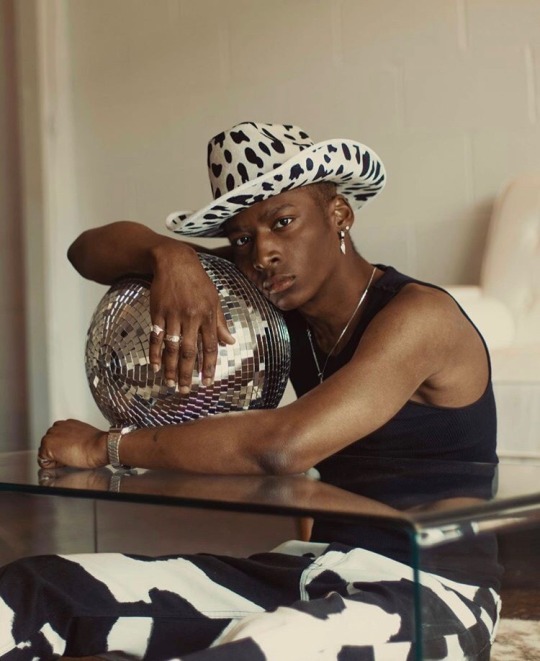
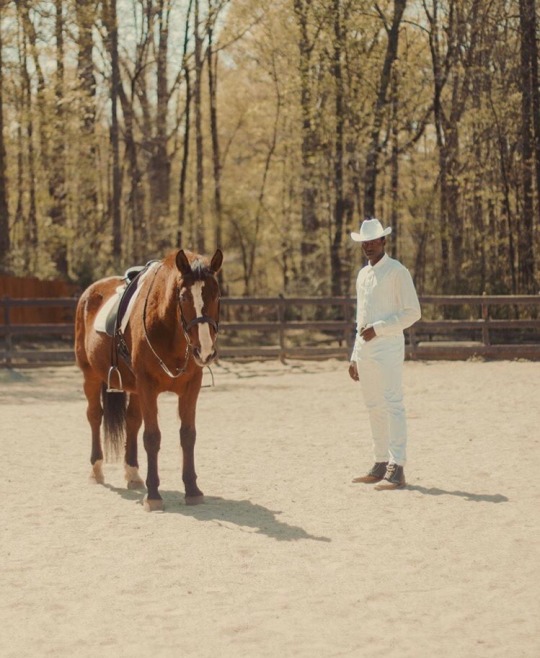

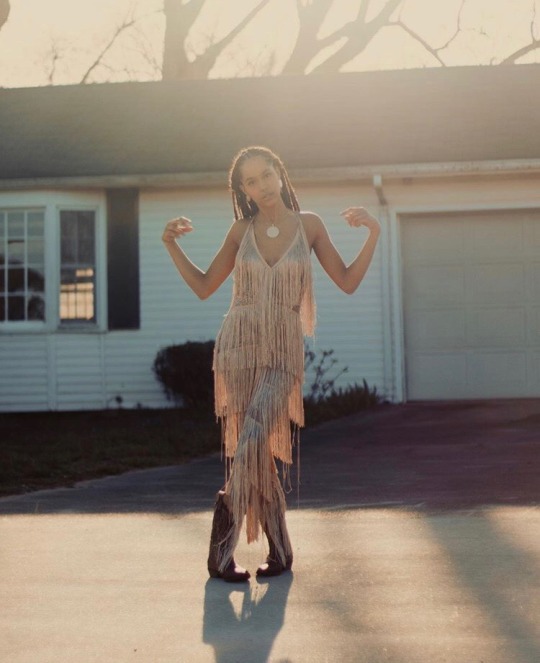

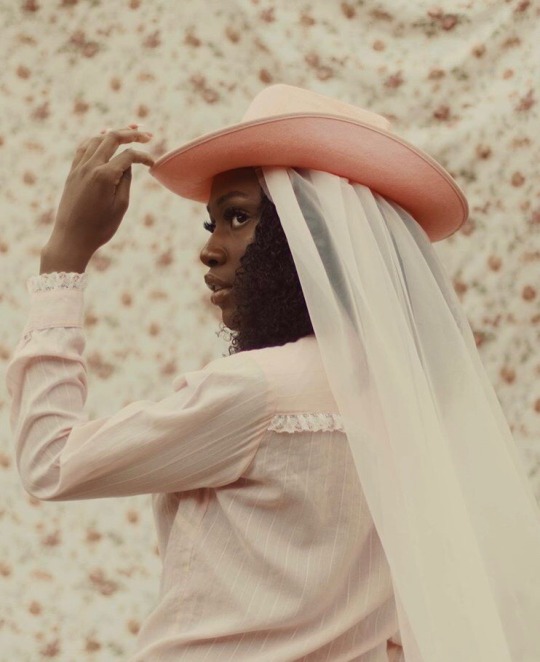
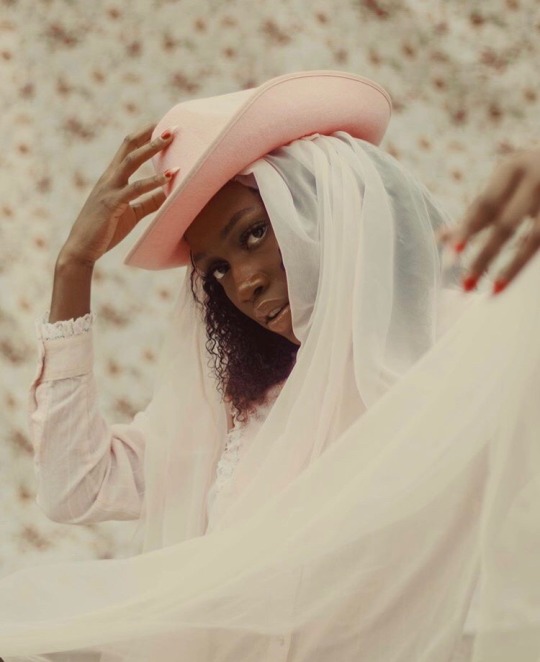
EQUESTRIAN
Ig: braylendion
#mens fashion#menswear#stylist#melanated#african fashion styles#black fashion#fashion#fashion photography#instagram photos#black cowboys#texasphotographer#atlanta#braylen dion
241 notes
·
View notes
Photo



The African American Cowboy~
By the 1870s and 1880s, it is believed around 25 per cent of the 35,000 cowboys in the Old West were black
Despite their skills with cattle and horses, black ranch hands still faced discrimination. They got all the worst jobs, rode the lamest and the most temperamental horses, while also being banned from brothels. It was also the black cowboy who broke the horses and herded the cattle across the rivers.
However the cow handling industry generally treated black men similarly to white men in terms of pay and responsibilities. Black and white men shared sleeping quarters and even blankets.
Discrimination persisted, though to a lesser extent than in other places in America of the time. Whereas saloons in the Wild West were typically segregated, whites and blacks could meet in the middle, although restaurants were socially regulated.
Meanwhile black men were banned outright from brothels, but welcome in gambling halls.
There were also black women cowboys, though their numbers are unknown, as income was provided to a common household rather than to individual women.
Source: https://www.dailymail.co.uk/news/article-5633579/The-Wests-forgotten-black-cowboys-ranch-hands-gunslingers-got-worst-jobs.html
566 notes
·
View notes
Photo



One in four cowboys was black. So why aren’t they more present in popular culture?
(Via Smithsonian Magazine)
#collectorsweekly#history#cowboy#west#american#african american#black history#western#race#pop culture
119 notes
·
View notes
Audio
It’s been awhile
6 notes
·
View notes
Text

Black cowboy moodboard
105 notes
·
View notes